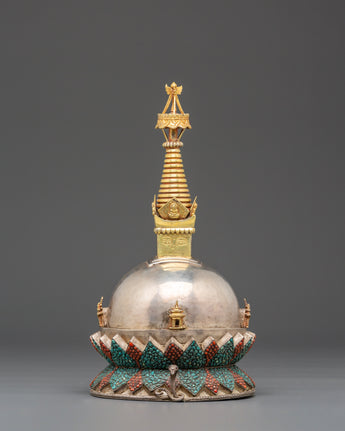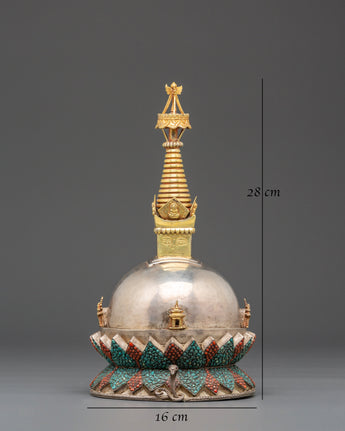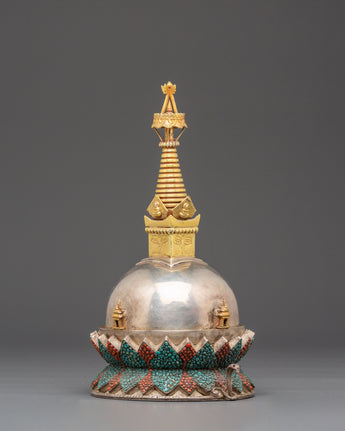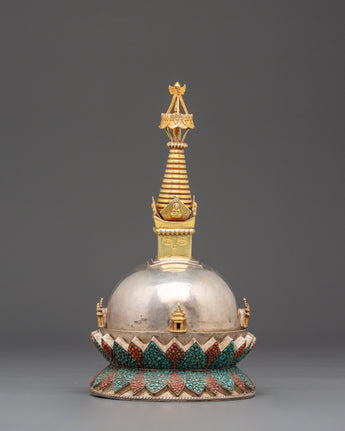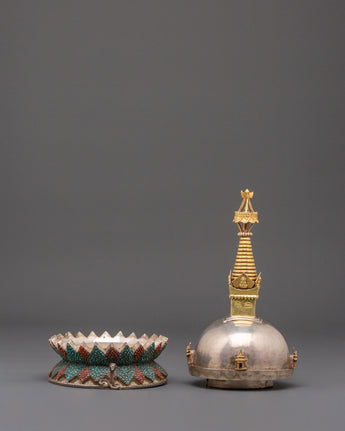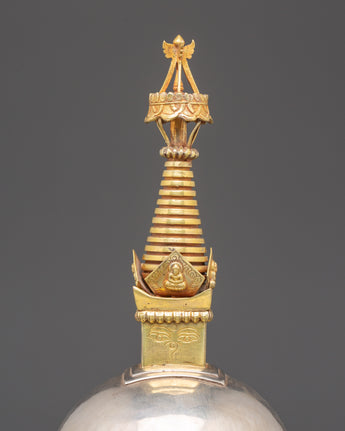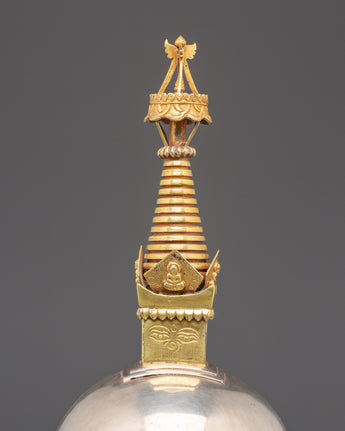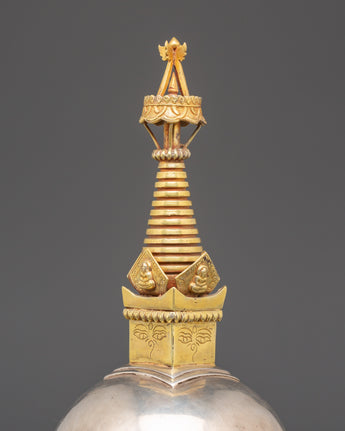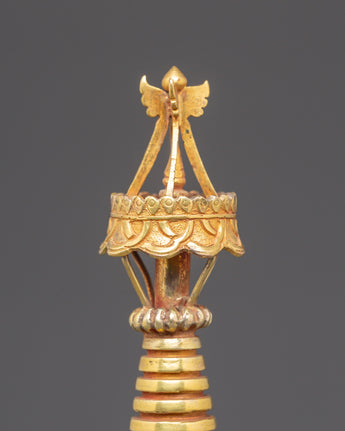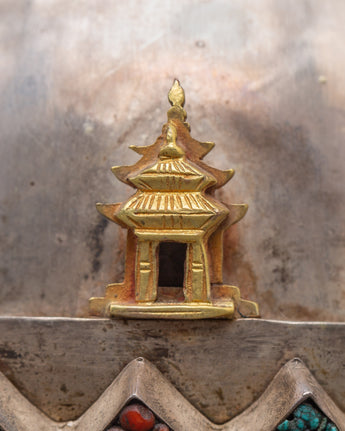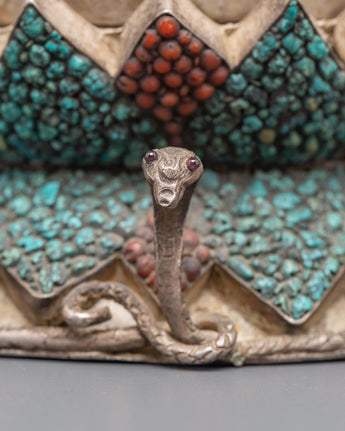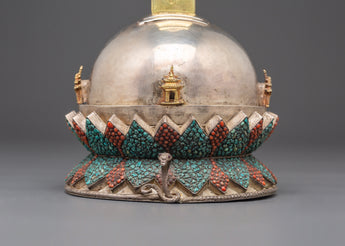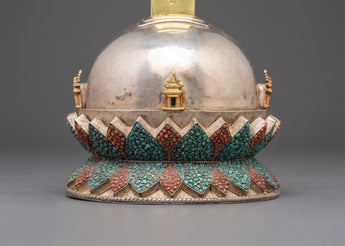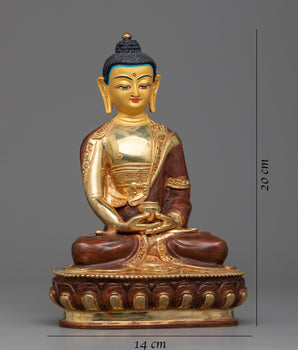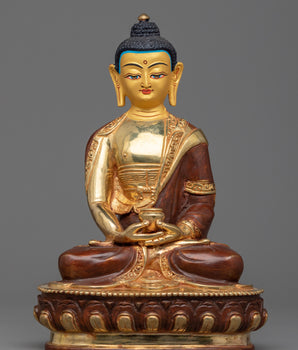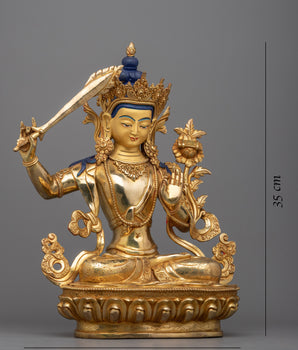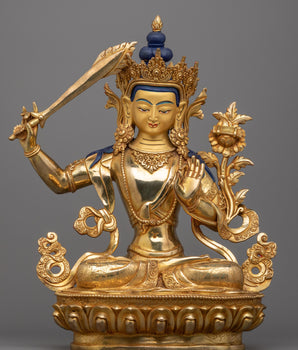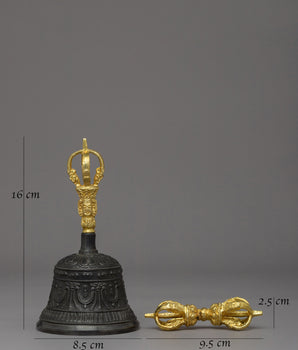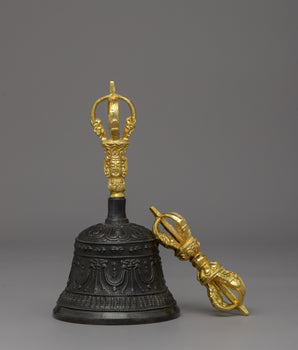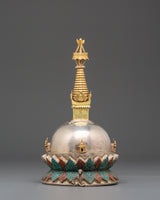
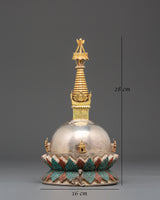
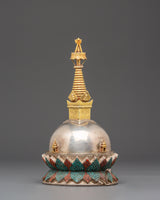
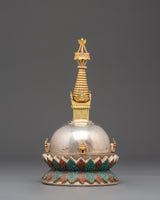
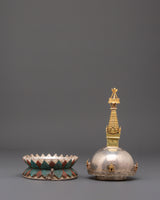
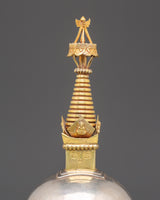
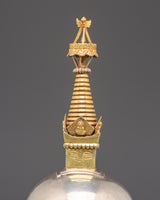
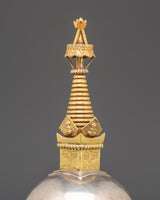
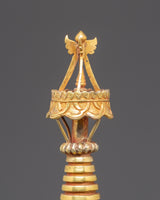
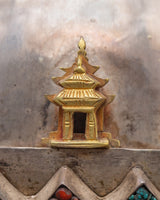
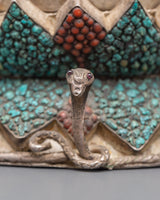

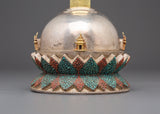
24k Gold Plated Tibetan Stupa | Symbol of Enlightenment

100% AUTHENTIC

HANDMADE

FREE SHIPPING
Pure Silver With Coral & Original Turquoise | Handmade 24k Gold Plated Tibetan Stupa
--------------------------------------------------
Size: 28cm(Height) x 16cm(Width)
Weight: 1.57kg
Materials: Pure Silver, 24k Gold Plated, Original Stones: Coral, Turquoise
--------------------------------------------------
About Our Ritual Item :
This Pure Silver Stupa is a precious Tibetan Buddhist item that was meticulously made to represent the journey to enlightenment and spiritual awakening. This stupa, which stands 28cm tall and 16cm wide and weighs 1.57kg, is a beautiful ritual object used for offerings, meditation, and ceremonial rites. The stupa, one of Buddhism's most revered symbols, reflects the Buddha's enlightened mind and serves as a potent reminder of peace, compassion, and ultimate freedom.
This stupa, made of pure silver with 24k gold plating, is embellished with authentic turquoise and coral stones, each having a symbolic meaning—turquoise for spiritual healing, coral for vigor and life force. The lotus petal design at the base denotes purity, while the golden spire depicts the stages of enlightenment. This stupa stands out for its openable lid from the top joint, which allows sacred relics, mantras, or offerings to be placed within, boosting its significance as a real ritual vessel.
This Tibetan Buddhist stupa is a spiritual treasure, perfect for practitioners, collectors, and holy spaces. It is used in ceremonial ceremonies, as an altar centerpiece, or as a symbolic container for relics and blessings, and represents harmony, protection, and spiritual energy. This silver and gold-plated stupa combines artistry with deep spiritual meaning, making it a lasting piece of Buddhist heritage that inspires devotion and inner serenity.
Introduction To Stupa :
Before Buddhism, great teachers were buried in mounds. Some were cremated, but sometimes they were buried in a seated, meditative position. The mound of earth covered them up. Thus, the domed shape of the stupa came to represent a person seated in meditation, much as the Buddha was when he achieved Enlightenment and knowledge of the Four Noble Truths. The base of the stupa represents his crossed legs as he sat in a meditative pose. The middle portion is the Buddha’s body, and the top of the mound, where a pole rises from the apex surrounded by a small fence, represents his head. Before images of the human Buddha were created, reliefs often depicted practitioners demonstrating devotion to a stupa.
How to Set Up Your Own Buddhist Shrine?
• Find a clean, quiet, and uncluttered spot
• Set up an altar table, and cover it with an altar cloth that calls to you
• Place your sacred item at the center
• If you want a more elaborate altar, you can put a Stupa as well


